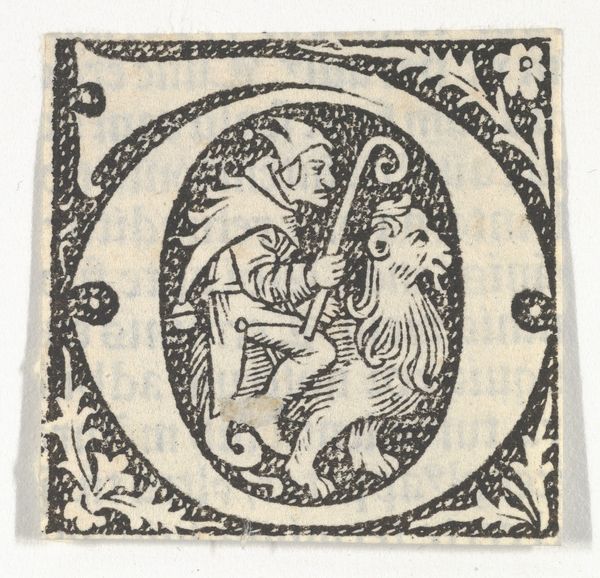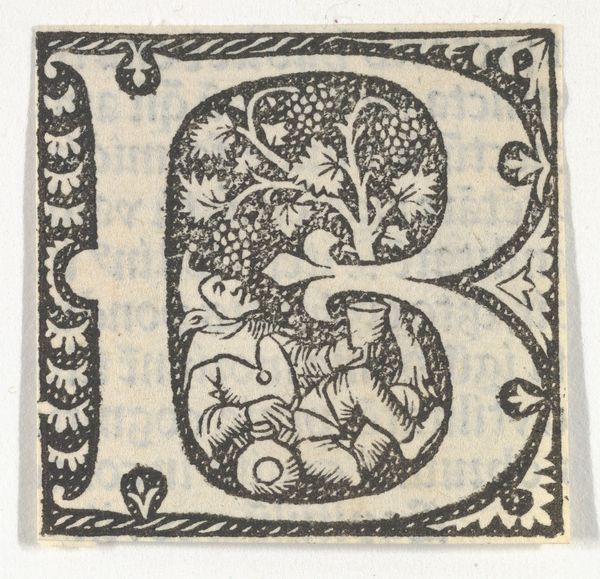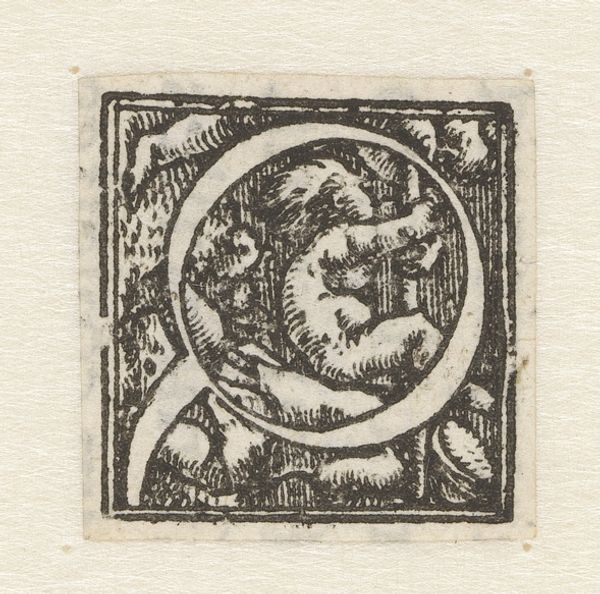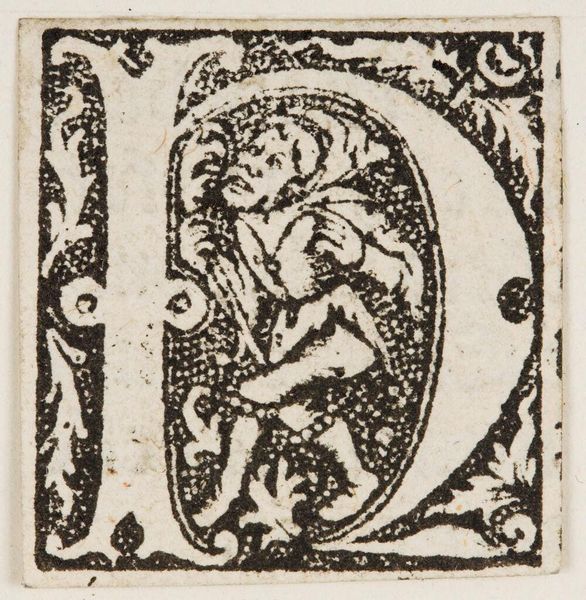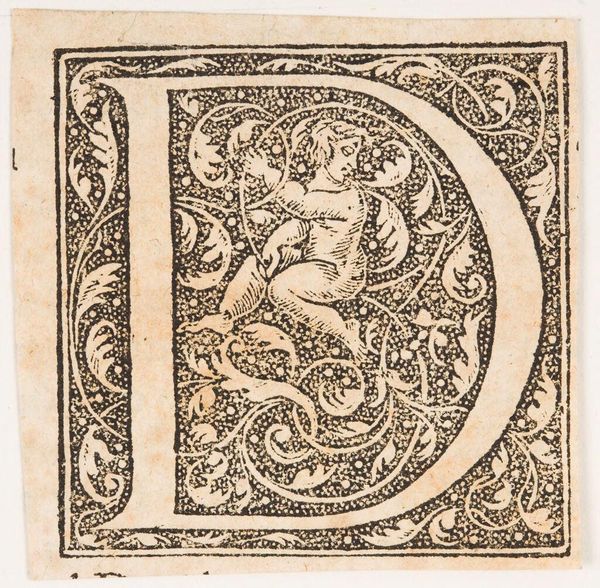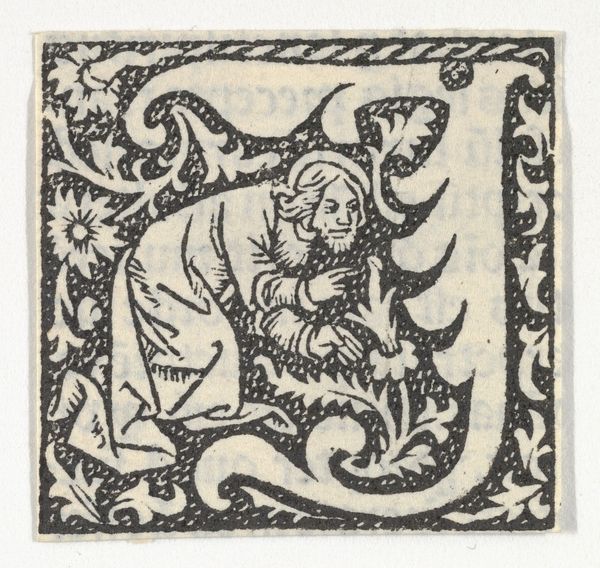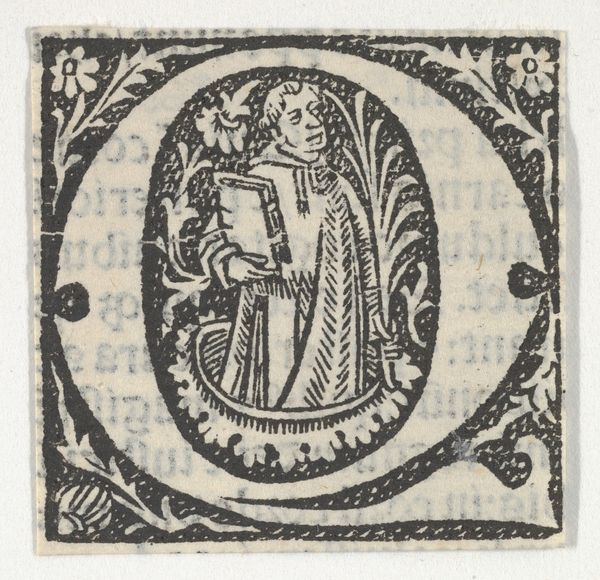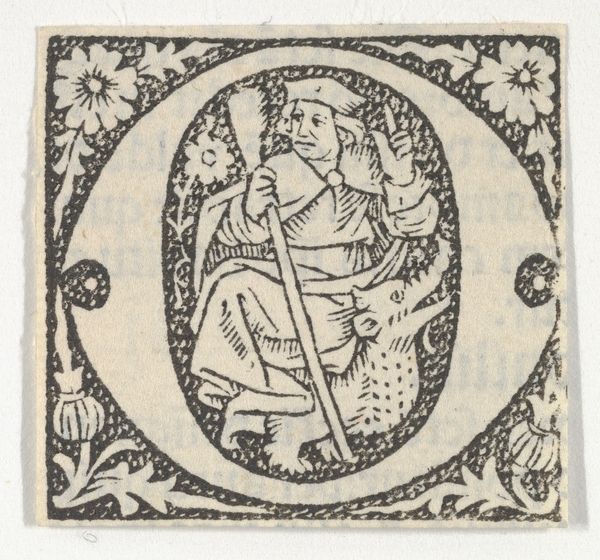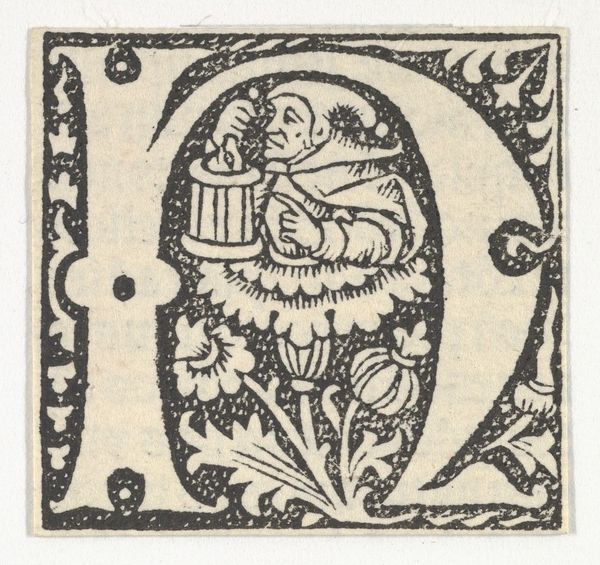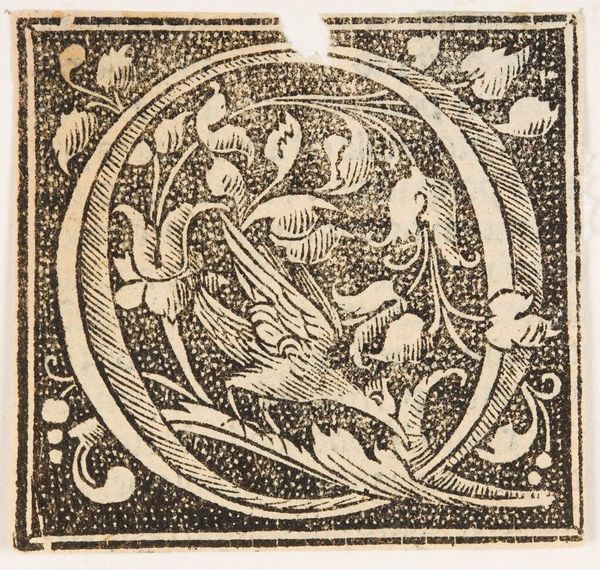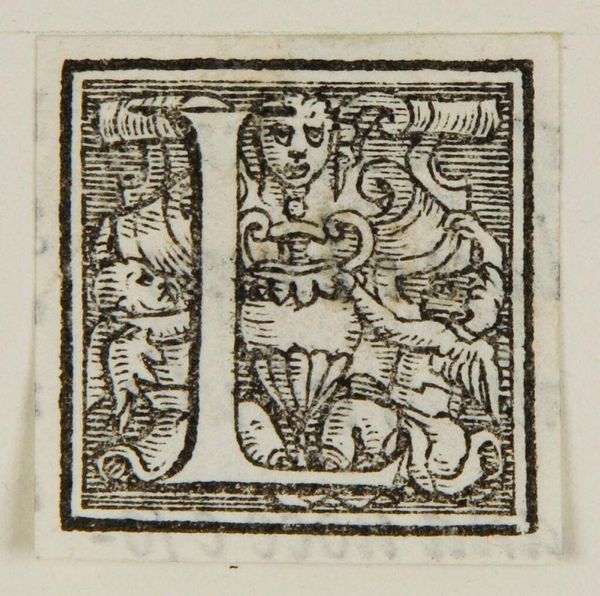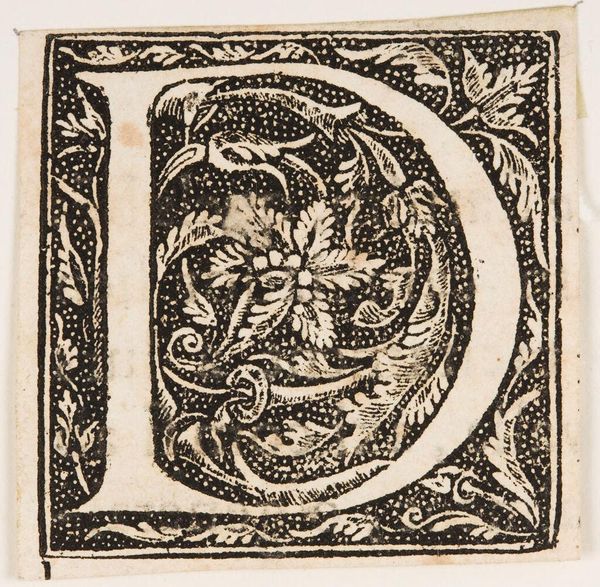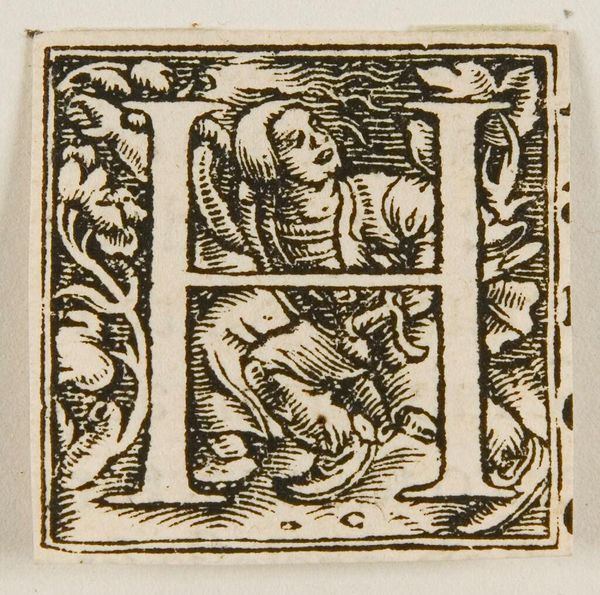
drawing, print, ink, woodcut
#
drawing
#
medieval
#
pen drawing
# print
#
figuration
#
ink
#
woodcut
Dimensions: Sheet: 1 3/8 × 1 7/16 in. (3.5 × 3.6 cm)
Copyright: Public Domain
Curator: What a darkly whimsical initial. The letter 'D,' part of an anonymous "Decorated Roman Alphabet" dating from between 1485 and 1499. The print, rendered in ink, through woodcut, belongs to the collection here at the Metropolitan Museum of Art. Editor: It strikes me as both playful and unsettling. The stark black ink creates a strong visual contrast, highlighting this peculiar figure riding what looks like a demon! Curator: It’s fascinating to consider the broader social role of such an image. Initial letters like this one weren't just decorative; they were part of a larger system of visual communication. They provided structure in books, but, even more so, a moment for marginalia, of the visual other within a textual context. Editor: That’s interesting! What does the rider, blaring into his trumpet, perched upon that demonic figure suggest to you? Perhaps a triumphant figure overcoming the darker aspects of human nature? Or being seduced and driven on by those impulses, amplified to the point of announcement. Curator: It could symbolize a range of things, and that is perhaps part of their allure and cultural impact. During this period, such images circulated widely, shaping a shared visual language and reinforcing established norms. Were the patrons literate? Likely not, and in that gap meaning forms with increased fluidity. Editor: Looking closer, it is an uncomfortable partnership: rider and beast. A warning, perhaps, to maintain awareness of our darker natures so they don’t control or lead us astray? Even in something as functional as an alphabet letter, we see reflections of deeper anxieties and the ever-present struggle between good and evil. Curator: The rise of printmaking allowed for unprecedented visual standardization. However, each institution consuming that alphabet makes new assumptions about each individual form within. In many ways the afterlife is what provides these works the importance they enjoy now. Editor: Indeed. Looking at it now, removed from its original textual setting, we are free to consider what remains for our contemporary moment, the shadows of those bygone anxieties. Curator: It truly becomes more than just a letter, it becomes a small window into the late 15th century. Editor: Agreed, a single letter containing a multitude.
Comments
No comments
Be the first to comment and join the conversation on the ultimate creative platform.
